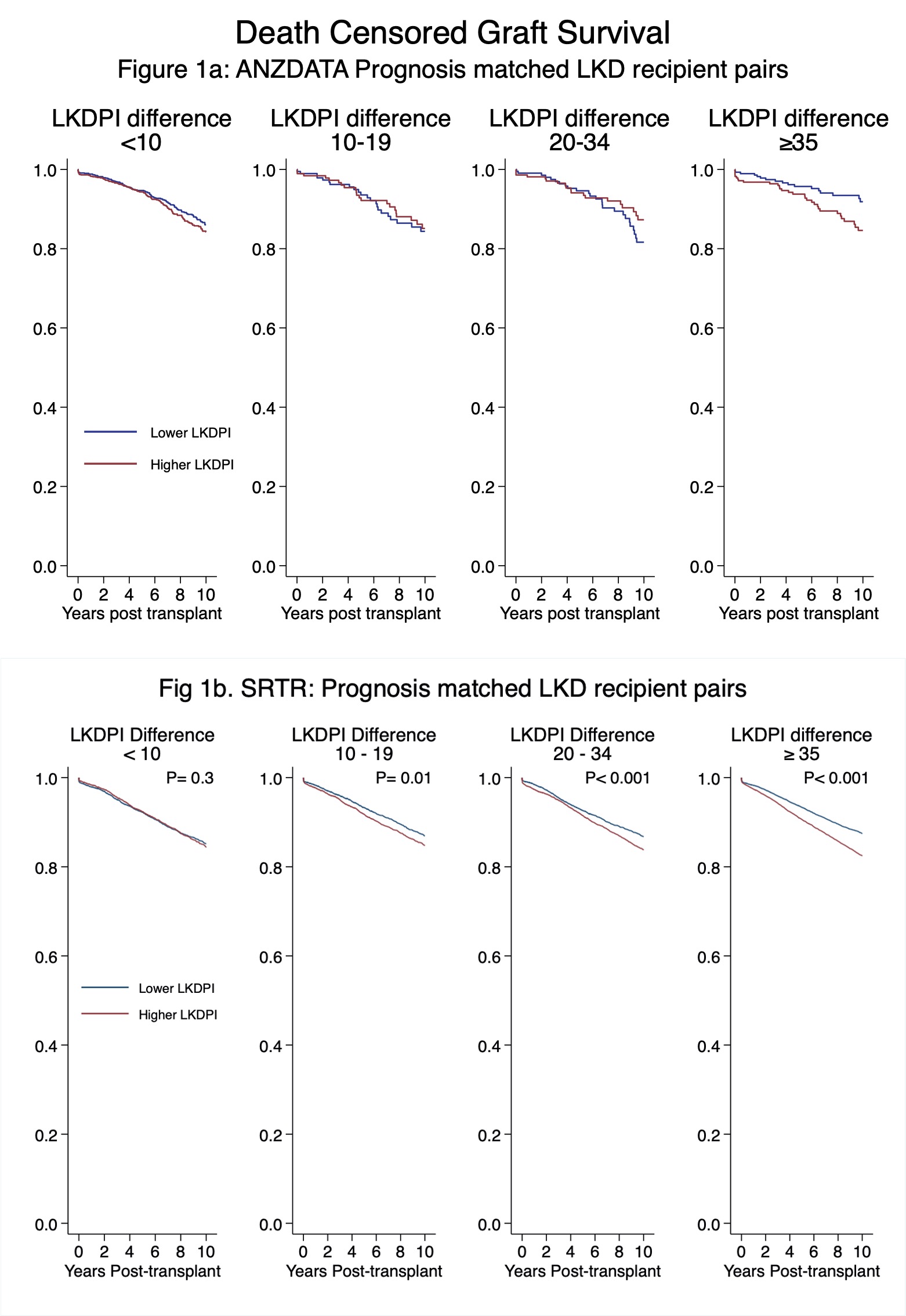Donor Factors Do Not Discriminate Living Donor Kidney Transplant Outcomes and Should Not Be Used to Promote the Use of Compatible Pairs in Kidney Paired Donation Programs
1ANZDATA, Adelaide, Australia, 2Providence Health Research Institute, Transplant Research, Vancouver, BC, Canada, 3Oxford University Trust Hospital, Oxford, United Kingdom
Meeting: 2022 American Transplant Congress
Abstract number: 493
Keywords: Graft failure, Kidney transplantation, Living donor
Topic: Clinical Science » Kidney » 48 - Kidney Paired Exchange
Session Information
Session Name: Kidney Living Donor & Paired Exchange
Session Type: Rapid Fire Oral Abstract
Date: Tuesday, June 7, 2022
Session Time: 5:30pm-7:00pm
 Presentation Time: 6:00pm-6:10pm
Presentation Time: 6:00pm-6:10pm
Location: Hynes Room 302
*Purpose: Enrolment of ABO blood group and HLA incompatible pairs in kidney paired donation programs improves matching potential. The benefit for compatible pairs, however, is uncertain. A possible benefit is better recipient outcomes due to transplantation from a donor with a lower Living Donor Kidney Profile Index (LDKPI) than the directed donor.
*Methods: To determine the recipient benefit from this strategy we assessed the discrimination of donor factors (how well you can pick which of 2 donors will have the best outcome) for Death censored graft survival (DCGS) in 3 ways: 1)We sequentially added donor factors to DCGS models that included recipient factors and assessed discrimination with Harrell’s C statistic. 2)We created prognosis-matched LKD recipient pairs for recipient factors. We built a stratified Cox model of DCGS for these pairs with the LKDPI as the only predictor. 3)To visualise the LKDPI changes, we calculated the LKDPI difference among prognosis matched recipient pairs, and plotted DCGS for the differences. We performed parallel analyses with the Scientific Registry of Transplant Recipient (SRTR) and the Australia and New Zealand Dialysis and Transplant Registry (ANZDATA) from 2004-2020 to ensure robustness of our findings.
*Results: There were 64,448 SRTR and 4524 ANZDATA LKD transplants. Survival analyses with recipient factors had C statistics of 0.64 (0.63-0.64) and 0.66 (0.63-0.68) respectively. Adding donor factors didn’t improve discrimination in the models (C statistic increase – 0.01). There were 22,329 SRTR prognosis matched pairs and 1854 ANZDATA pairs. Once matched, the respective C statistics for only LKDPI were 0.54 (0.52-0.57) and 0.51 (0.50-0.51). The Figure shows DCGS based on matched pairs grouped by difference in LDKPI scores. The differences in 10-year DCGS was 0.8, 2, 2, 5% for difference in LDKPI of <10, 10-19, 20-34, ≥35.
*Conclusions: Donor factors do not meaningfully discriminate LD transplant outcomes. The LKDPI score will correctly identify a donor with better graft survival 51-54% of the time (similar to flipping a coin). Even large differences in LKDPI score translate to clinically modest differences in transplant survival. We conclude that strategies to expand the participation of compatible pairs in paired kidney donation based on differences in the LDKPI should be reconsidered.
To cite this abstract in AMA style:
Irish G, Chang D, Chadban S, Boudville N, Campbell S, Kanellis J, McMichael L, Sharples E, Kadatz M, Gill J, Clayton P. Donor Factors Do Not Discriminate Living Donor Kidney Transplant Outcomes and Should Not Be Used to Promote the Use of Compatible Pairs in Kidney Paired Donation Programs [abstract]. Am J Transplant. 2022; 22 (suppl 3). https://atcmeetingabstracts.com/abstract/donor-factors-do-not-discriminate-living-donor-kidney-transplant-outcomes-and-should-not-be-used-to-promote-the-use-of-compatible-pairs-in-kidney-paired-donation-programs/. Accessed December 22, 2025.« Back to 2022 American Transplant Congress

